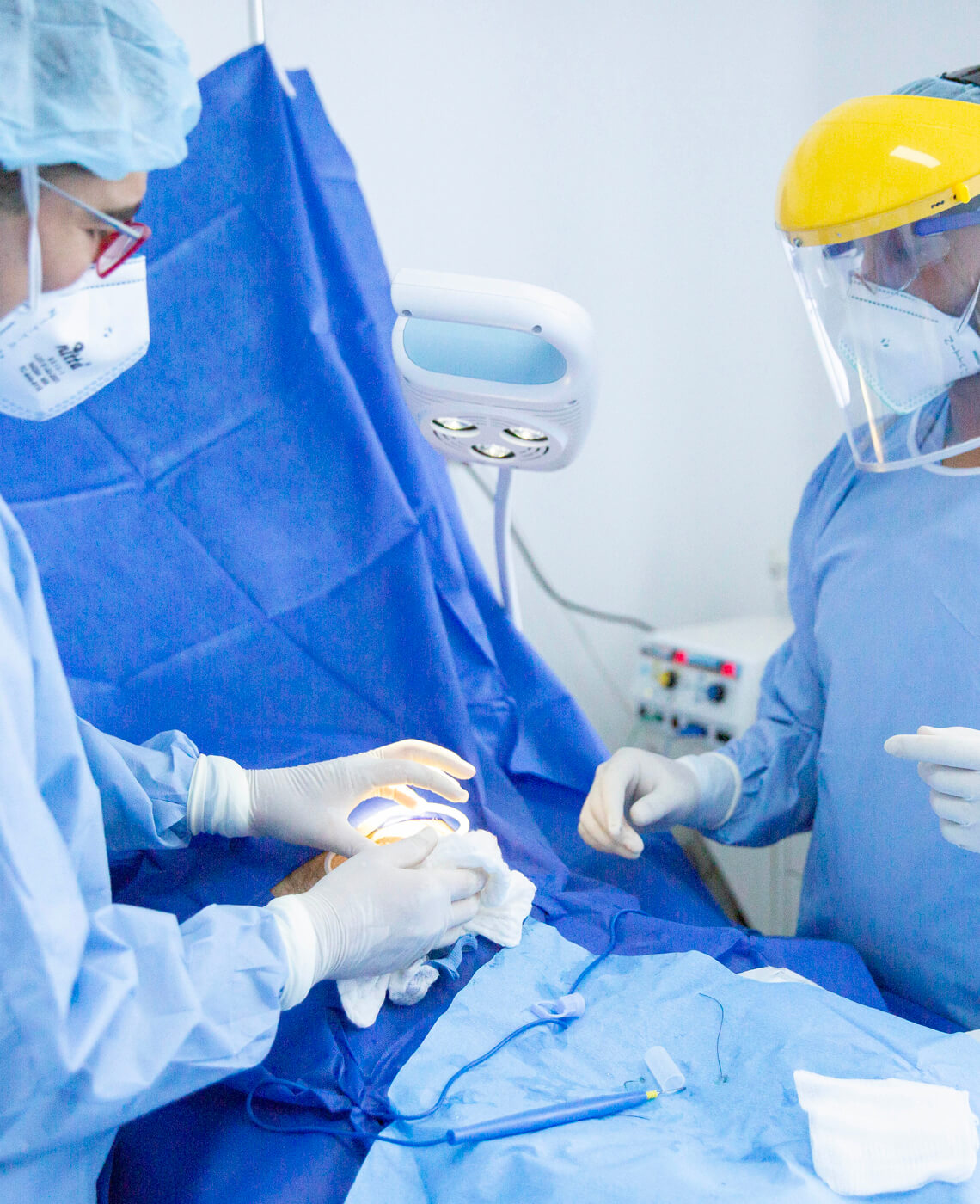PD CATHETER INSERTION PROGRAM
Become your patient's direct line to PD
The critical first step in successful PD therapy is successful catheter access. Nephrologists worldwide are increasingly choosing to take control of their patients' access and insert PD catheters themselves, using percutaneous (Seldinger) technique.1 When you perform catheter insertions in your own practice, you and your patients can experience a variety of verifiable advantages over surgical insertions.

Support your patients' therapy choices and lifestyle goals with a safe, long-lasting and efficacious PD catheter.
Percutaneous catheter insertion expands your patients’ access to PD and may avoid the need for urgent or unplanned HD.2
Outcomes are shown to be statistically equivalent to—and in some situations, better than— other insertion methods.3-4
And, your patients can recover faster and more comfortably, with less postoperative pain than with other insertion techniques.5

Put time and control in your hands by establishing PD access when your patients need it.
When you insert PD catheters percutaneously, it’s possible to control your patients’ entire dialysis care plan, starting with a timely placement that avoids having to accommodate operating room and surgeons' schedules.6
Additionally, percutaneous catheter insertion is especially beneficial for unplanned or urgent-start patients, who cannot wait and, as a result, are often started on HD using temporary vascular access via a central venous catheter.7
Finally, by expanding your own expertise and influence, the proficiency you gain in this procedure can allow you to develop a valued specialization that grows your PD program.

A direct, cost effective, time-efficient approach
Compared to laparoscopic technique or open surgical placement of the PD catheter, percutaneous technique is direct and can be more cost-effective and time-efficient. Studies suggest no significant difference in one-year catheter survival, catheter dysfunction, or prevalence of peritoneal fluid leak. However, there was a significantly lower incidence of peritonitis among those with percutaneous placement.3,4 And, because it does not require availability of a surgeon, an operating room, or a recovery room, it does not incur the costs associated with scheduling or staffing them.6 Percutaneous insertion enables the nephrologist to make certain the patient commences peritoneal dialysis—especially important for those patients who require immediate dialysis.6
There's no question that, in many facilities, the line to the operating room is longer than the line to the procedure room. There are surgical barriers for timely intervention. Unfortunately, many surgeons, because of lack of training, are less than enthusiastic about performing PD access procedures…. There's also a lack of understanding of the importance of appropriate prioritization of PD access cases. They're added onto the surgical schedule at the end of the day, and the patients have been NPO all day, no nutritional intake, then, if they're running overtime, the patient gets cancelled. And that becomes a major problem, a major hurdle in getting timely access for the patient.
John H. Crabtree, MD, Chair, PD University for Surgeons, International Society for Peritoneal Dialysis, North America, speaking at the BD Renal Agency, 07 Apr 2017
Compared to an open laparotomy and a laparoscopic insertion, it allows the renal clinic to develop the procedure and does not require as many supplies and as much staff as in a surgery room itself. I believe that it is the greatest advantage that can be developed in the field of renal care.
Carlos Nuñez, MD , General Practitioner, Renal Emergency Service, Bogotá, Colombia
Change your future … today
Learning to insert PD catheters percutaneously could significantly change the future of your practice and of your patients who have a preference for PD.



